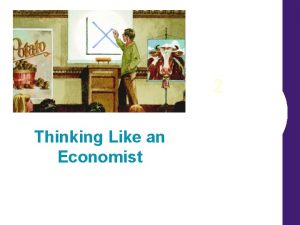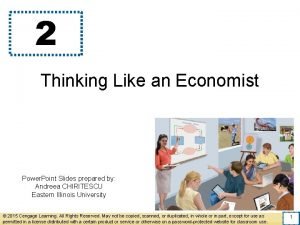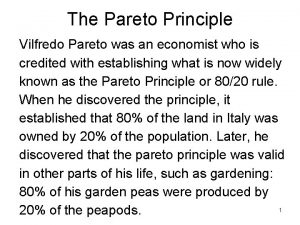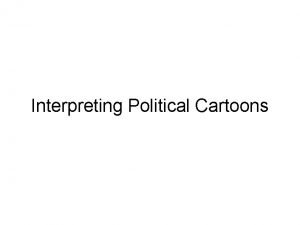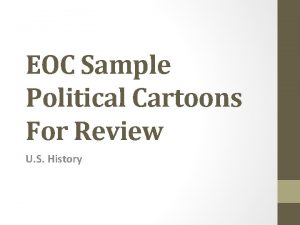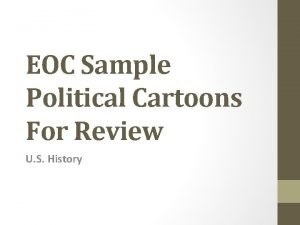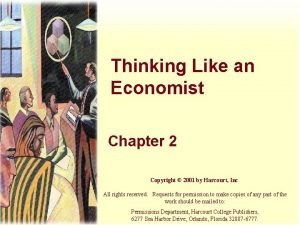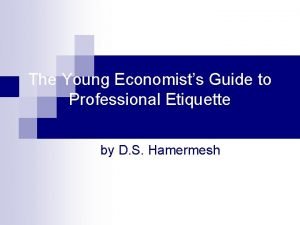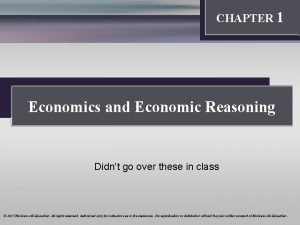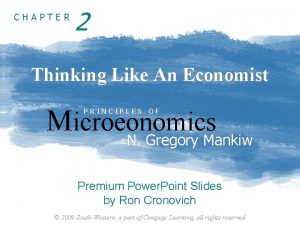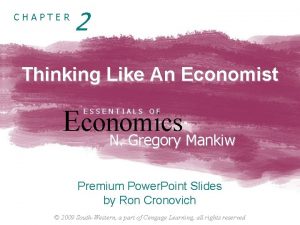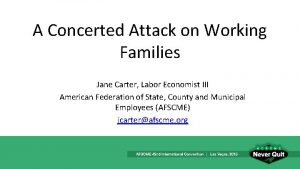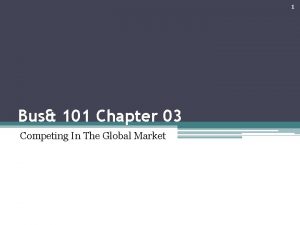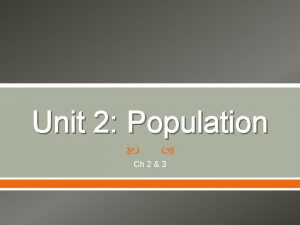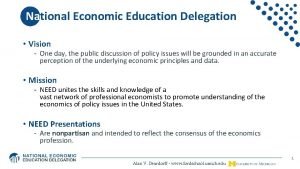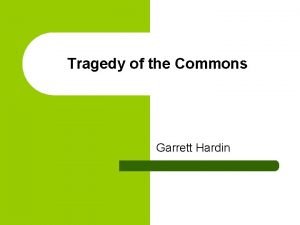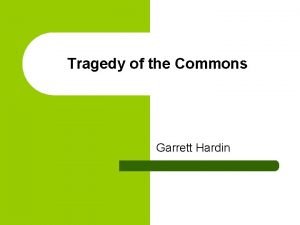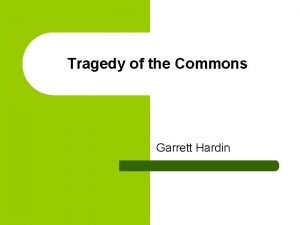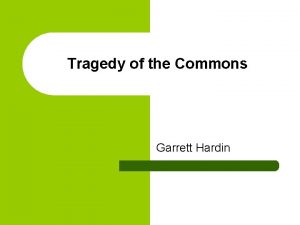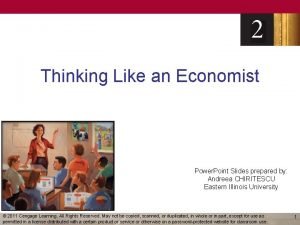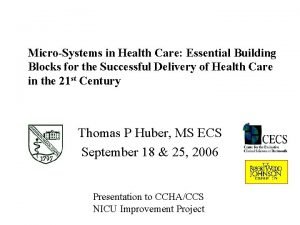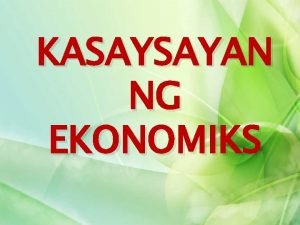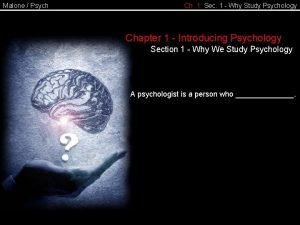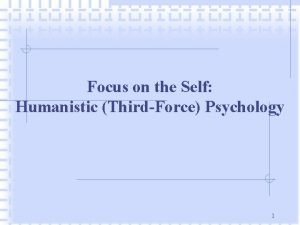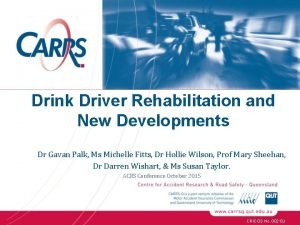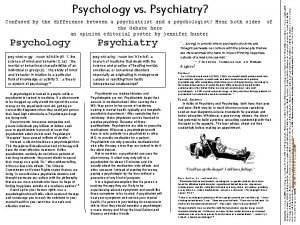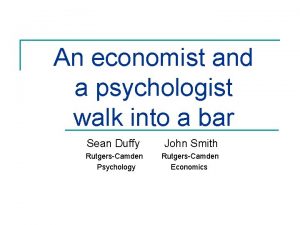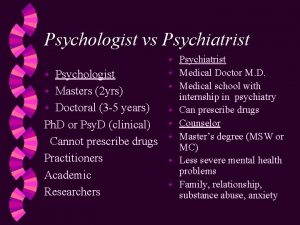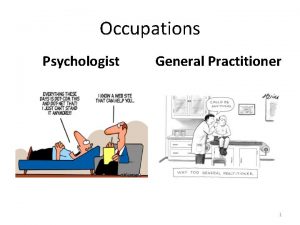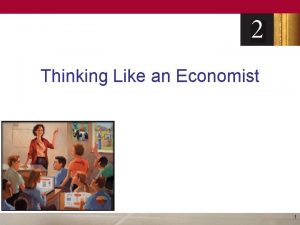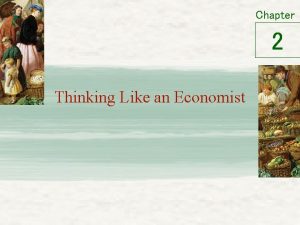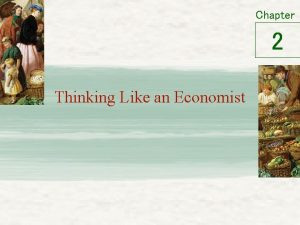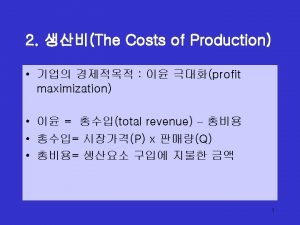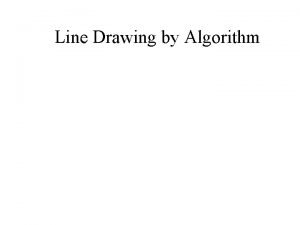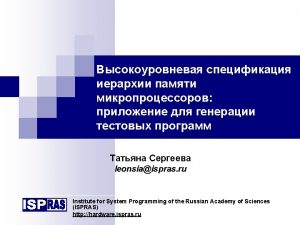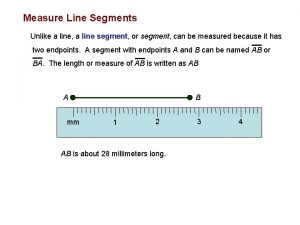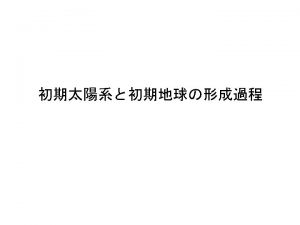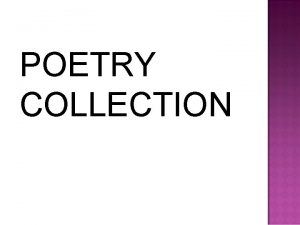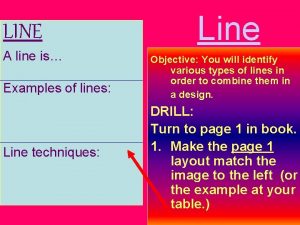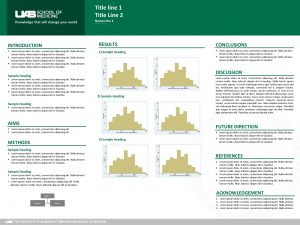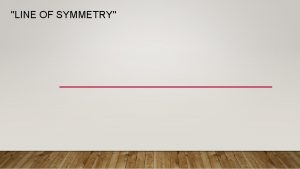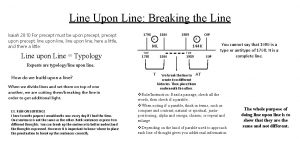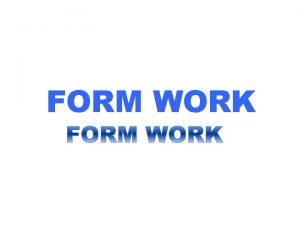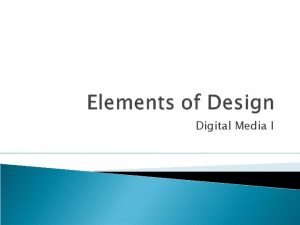A psychologist and an economist form a line































- Slides: 31

A psychologist and an economist form a line: What can imperfect perception of length tell us about stochastic Sean Duffy John Smith choice? Rutgers-Camden Psychology Economics

Choice experiment 2

Assessment 3

Assessment 4

Choice experiment We infer that U(Pringles) ≥ U(Coke) But what if the choice was a mistake? Or utility is random or imperfect? True preferences are not observable 5

An economist and a psychologist walk into a bar n Objective reality is perceived imperfectly n How long is this line? q q Comparison Reproduction Psychologists study imperfect perception n q q Judgments of length, weight, shades, loudness, etc. Weber-Fechner Law (1860) 6

Our choice experiment n Using this insight, we design n An “idealized” choice experiment where: n Can observe “true” preferences of subjects q n Preferences are stable and objective But subjects have imperfect perception of their preferences 7

Experimental Design n Objects of choice are lines n Paid an increasing amount in the q length of line selected n Length is a proxy for utility n Does this help us better understand random choice? q Yes? 8

9

10

11

12

13

14

15

Experimental Design n Between 2 and 6 lines n Varied the length of the longest line from q 160 pixels (8. 0 cm) n q n And 304 pixels (15. 1 cm) Varied the difficulty of the treatment q Lines of n n n very similar lengths kinda similar lengths very different lengths 16

Response times! n Unlike the paper in Getafe n We give subjects up to 60 seconds to make the selection 17

Choice is random (no table) n n Probability longest line is selected is decreasing in q q Number of lines in choice set Difficulty of choice n q (similarity of the lengths) Length of the lines n Economists: Wealth effects q n Richer, so expend less effort Psychologists: Weber’s law q Larger stimulus, reduced absolute sensitivity 18

Response times (no table) n n Response times are increasing in q q Number of lines in choice set Difficulty of choice n q (similarity of the lengths) Length of the lines n Suggests subjects are expending more effort on longer lines 19

Response times n More difficult decisions q n n Longer response times Fudenberg, Strack, and Strzalecki (AER, 2018) Uncertain utility in a choice Constant cost of gathering information Incorrect decisions will have longer response times than q correct decisions 20

Correct faster than incorrect? n n n Pooled Correct: 12. 25 s Incorrect: 15. 730 s q n M-W: p<0. 001 Same result when restricted to q q q number of lines difficulty treatment line lengths 21

But… n n Maybe subjects who take longer on task Are also worse at the task 22

Response times Suboptimal decisions take longer Optimal decisions are faster 23

Random choice models n 24

Gumbel errors? ? ? n Gumbel distribution q q Type 1 extreme-value Double exponential F(ε)=e Normal -ε -e Gumbel 25

Multinomial Discrete Choice n Estimate: n (1, 3, 5) Gumbel errors, identically distributed (2, 4, 6) Normal errors, identically distributed n n (1, 2) Linear: Lengthi (3, 4) Log: log (Lengthi) (5, 6) Power: (Lengthi)1. 04 n Compare AICs n n 26

Gumbel vs. Normal AIC smaller for Gumbel than normal Errors appear to be Gumbel 27

Conclusions n In our idealized choice setting q Where we know the true preferences n Choice is random n Longer response times for more difficult choices n Suboptimal choices have longer response times than optimal choices q n Fudenberg, Strack, and Strzalecki correct? Errors Gumbel distribution 28

Random choice n Random choice is due to many things q q q Attention sets Private information Etc. n But even controlling for these random choice occurs because of imperfect perception of our own preferences n And we can study this in the lab n n 29

Bad science in psychology n. Ask me about the very bad science q Later 30

Thanks! n n n John Smith Rutgers University-Camden smithj@camden. rutgers. edu 31
 Thinking like an economist summary
Thinking like an economist summary Thinking like an economist ppt
Thinking like an economist ppt Lower inner fence
Lower inner fence A wise economist asks a question analysis
A wise economist asks a question analysis A wise economist asks a question meaning
A wise economist asks a question meaning What does the man on the park bench represent
What does the man on the park bench represent Thinking like an economist chapter 2
Thinking like an economist chapter 2 The young economist's guide to professional etiquette
The young economist's guide to professional etiquette Thinking like an economist chapter 1
Thinking like an economist chapter 1 Chapter 2 thinking like an economist summary
Chapter 2 thinking like an economist summary Chapter 2 thinking like an economist summary
Chapter 2 thinking like an economist summary Jane carter labor economist
Jane carter labor economist Economist.com
Economist.com Economist.com
Economist.com Economist china trade
Economist china trade Example of tragedy of the commons
Example of tragedy of the commons Tradgey of the commons
Tradgey of the commons Hardin economist
Hardin economist Hardin economist
Hardin economist Thinking like an economist chapter 2
Thinking like an economist chapter 2 Microsystem definition
Microsystem definition Buod ng kasaysayan ng ekonomiks
Buod ng kasaysayan ng ekonomiks 66454 subject code
66454 subject code Present continuous tense interrogative
Present continuous tense interrogative Educational psychologist wirral
Educational psychologist wirral William james known for
William james known for Was maslow a humanistic psychologist
Was maslow a humanistic psychologist Molly malone psychologist
Molly malone psychologist Was maslow a humanistic psychologist
Was maslow a humanistic psychologist Gavan palk psychologist
Gavan palk psychologist Define yobbish
Define yobbish Psychologist vs psychiatrist
Psychologist vs psychiatrist
